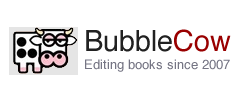When you first upload your book to Amazon it can be pretty scary. They ask for a stack load of information without ANY indication of which bits will help with sales and which are just there because they need to be.
As part of our Uploading to Amazon online course we teach writers that they should be seeing their Amazon page as ‘real estate’ that they own. Your Amazon book page is one of the ONLY places on the Internet that potential readers will go to with the understanding that they might buy your book. This is huge. To have a visitor to your Amazon page that is ready to buy is an opportunity you can’t miss.
Below is a list of six ‘areas’ of your Amazon book page you should consider altering when trying to capture the maximum number of book sales:
1. Title:
Does your title match other books in your genre? For example, if you are a crime thriller, which is part of a series, you may want to consider putting the name of the investigator in your title. Such as A Study In Scarlet [A Sherlock Holmes Case]. The point here is to consider what extra information can you include in your title that will give the reader a hint at the book’s genre.
2. Contributors:
Amazon gives you the option to ‘name check’ people who have helped you create your book. If you have used a cover designer, illustrator, editor or proofreader then they should be included. In fact, if anyone has provided significant help then you should try to squeeze their name onto the contributor list. The reason is that it provides social proof. In short people will see that someone else is prepared to attach their name to your book and it must, therefore, be OK.
3. Book Cover:
A good book cover will help sell books but there are two key aspects you should consider. The first is to ensure your book’s cover matches the covers of other books in your genre. Readers will associate certain cover designs (styles) with certain genres. Does your book fit? The second is extra information. You can add anything to the cover in addition to the book’s title and your name. Consider including tag lines and other information. A good example is to include a phrase such as ‘…if you liked Game of Thrones you will LOVE this book!’
4. Product Description:
Your book’s description should be packed with as much information as you can manage. Below is a list of the things I suggest you include:
- One paragraph blurb.
- Outline of chapter content for non-fiction.
- One paragraph about you.
- A link to any social media or blogs.
- Reviews from places other than Amazon.
- Testimonials.
5. Category:
Your book should be added to two categories. I suggest one broad category (e.g. Books > Fiction) and one narrow category (e.g. Books › Crime, Thrillers & Mystery › Legal). The reason for this is that you will hopefully attract readers from the broad category, whilst having a chance of moving up the charts in the narrow category.
6. Reviews:
Reviews sell books. Your first goal is to get reviews. The best way to do this is to simply ask. Consider giving your book away and asking people to leave reviews. You are aiming at getting into double figures before easing up. Don’t be too worried about 1 and 5 star reviews, most readers will ignore these, it is the overall score that really counts. In the early days of your book, getting reviews is more important than sales.
—
I would urge you to think of your Amazon book page as something you are looking to control. Readers will be coming to the page thinking they might buy. In this situation your job is twofold. The first part is to make your book as attractive as possible for the potential reader. By this I mean having a good title, nice cover etc., but there are also factors you can’t influence (for example the reader may be looking for a book that is not the same genre as your book).
If the potential reader is on your page and your book is a good fit then you have a second job and that is to reduce the perceived risk to the buyer. The potential reader will be worried they will be making a mistake, and you need to do what you can to ease this worry. Lowering the price will do this to an extent but that is a blunt instrument. Testimonials, reviews and social proof will do a far more subtle and far better job at reducing the risk in the buyer’s mind.

Apr 2013